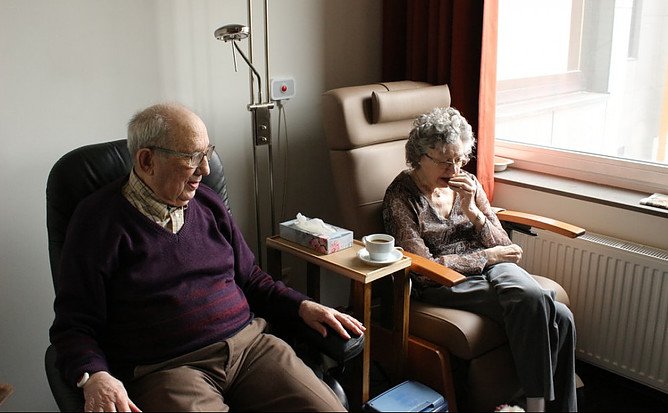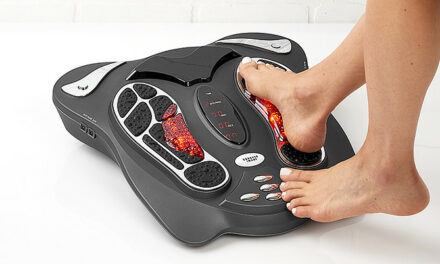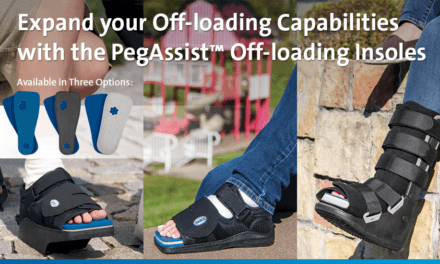In this Guide on Pressure Ulcer Prevention Products for Elderly and Bed-ridden Patients, we are sure going to consider how these unpleasant sores could be prevented. The range of aids, devices and product available for pressure sore prevention will be discussed too.
Pressure ulcers, also called pressure injuries, pressure wounds or pressure sores or most times medically called decubitus ulcers, are painful and could be a life-threatening condition that is common in bed-ridden and elderly people. Hospitalized patients and nursing homes residents and even reasonably independent elderly struggle with pressure ulcers because of their mobility challenges.
Before anything, let’s define pressure ulcers.
What are Pressure Ulcers or Pressure Sores?
Pressure ulcers or pressure sore are wounds to the skin and inner tissue which come as a result of long term pressure on the skin.
Pressure ulcer oftentimes appears on the skin around the bony parts of the body like the ankles, heels, tailbone, and hips.
Pressure sores can happen within a few hours or days.
They can be treated, but some do not heal completely if the treatment was too late.
Let’s did further into the severity of pressure ulcers, as identifying them early is the key to reversal before ‘it’s too late’.
Pressure Ulcer Classification
There are 5 Stages in the classification of pressure ulcers according to the National Pressure Advisory Panel, which shows the severity of the sore.
The Stages are below.
1st Stage
First of all, a pressure ulcer comes as a continuous red skin area that may hurt or itch and feel spongy and warm when touched.
In people who are dark-skinned, the mark appears to have a purple or blue cast, or look ashen or flaky.
Pressure ulcers in the 1st stage are external and disappear when relieved of the pressure.
2nd Stage
At this stage, there is already some loss of skin either in the outermost skin layer, the dermis or in all.
It is already an open sore that looks like an abrasion or blister with the surrounding tissues showing purple or red discoloration.
If promptly treated, pressure ulcers 2nd stage does not usually heal very quickly.
3rd Stage
When a pressure ulcer gets to this stage, the sore has advanced to the underlying tissue, developing a deep wound.
4th Stage
In this advanced and most serious stage, larger-scale skin loss happens, which also affects the muscle, tendons, bone, and joints.
The 4th stage pressure ulcer healing is extremely difficult and may develop into lethal bone, skin and blood infections.
Un-stageable
The ulcer is losing if full-thickness tissue in which the ground of the wound is covered by teacher or slough in the sore bed. The stage and the depth of the sore can never be determined until enough eschar or slough is removed.
Why are Elderly and Bed-ridden People Prone to Pressure Sores?
The elderly and bed-ridden people are prone to pressure sores because they are often lying on the bed for an extended period of time, therefore causing pressure ulcers to form.
Generally, pressure sore happens when a patient becomes unable to move around independently or unable to move at all. This means that the elderly and bed-ridden people who spend much of their time sitting or lying down in one place are at high risk for pressure sores.
When pressure is prolonged, it interrupts and limits the flow of blood to that area. The skin and tissue nearby are denied of nutrients when there is inadequate blood flow, which will lead to the skin to die. When that part of the body rubs against clothing, bed, or furniture, it becomes prone to sore.

Tip: Need some help to get into your bath? Here’s our Guide for Choosing a Best Bath Chair.
What are the Contributory Factors to Getting a Pressure Ulcer?
It is important to understand the factors that have lead to or contributed to incurring a pressure ulcer so as to help prevent it.
Several factors can put some individuals at higher risk of getting these painful sores that lead to long term hospitalization, increase the cost of health care and would sometimes lead to death.
Here they are.
Immobility or Poor Mobility
People who are not able to change their positions independently are at the risk of having a pressure sore because of the pressure that is exerted on bony prominences which leads to blood flow reduction in the tissue and hypoxia.
Tip: Here’s our Guide to Mobility, Daily Living and Walking Aid Options.
Poor Nutrition
Although only a research few studies supported this idea, it is though an accepted idea that patients who do not eat well are at high risk of getting pressure sores. Because, for this reason, patients who do not feed well can benefit from a dietitian review.
Poor Blood Circulation
Obviously, when a patient cannot feel pressure or pain, he or she is at a higher risk of having pressure ulcers.
Patients with stroke, spinal injury, neuropathy, multiple sclerosis (MS) and several other conditions that can affect the patient’s ability to feel pressure or pain are in this category.
Tip: Did you know Diabetes Socks such as NanoSocks can help you with nerve pain-related sluggish blood circulation?
Skin Color
Patients with dark skin pigmentation can be at risk of developing pressure sore because health care personals do not usually notice the early symptoms of pressure ulcers such as blanching erythema.
Also, patients who suffer conditions that affect the appearance of normal skin like dermatitis, eczema, bruising and other skin conditions are at a greater risk.
Support Surfaces
Sitting, lying or sleeping in one position for a longer period may lead to pressure sores.
Therefore, caregivers should frequently assess support surfaces of elderly, wheelchair bounded and bed-ridden patients and adjust them accordingly.
Age
An elderly person may be at a greater risk of getting pressure sores because of their inability to independently move or change position. On the other hand, newborn babies may not be able to move or change position without assistance, but their skin tone and flexibility is much higher.
Pain
Patients who suffer pain may not freely move, even with the unpleasant feelings of the pressure.
Also, when drugs meant for pain relief is taken too much, it can sedate a patient to a level where he or she cannot often change position as it is supposed. A caregiver should help to assess their patient’s ability to move and maintain their comfort.
Mental Status
An individual with dementia or any other mental disorder may not be able to understand or remember any given instructions that could assist in preventing pressure sores, or may not see discomfort as an indication to change position.
Incontinence
This condition can cause skin disease that may raise the risk of getting pressure sores.
Skin diseases could also make it difficult for caregivers or medical personals to notice the early signs of a pressure sore.

Why is Preventing Pressure Sore Essential?
Pressure ulcers are common in-home care and hospitals settings. A survey conducted recently revealed that about 26.7% of patients in the home care and hospitals had pressure sores.
Such ulcers do not heal very fast, and it is always tough to protect them from being infected.
Once they become open sores and infected, it will be very problematic for them to heal. The increased rate of pressure ulcer tallies with notable time and money spent on treatment and care.
In America, the yearly estimated cost of pressure ulcer treatment is about 11.6 billion U.S. dollars, this present pressure ulcer as one of the most expensive medical conditions. In order to improve health conditions and reduce costs, health care personals and nurses need to take a proactive measure focused on preventing pressure ulcers.
Now, let’s look at pressure ulcer prevention interventions and strategies you can consider regardless of the setting, from a hospital to in-home care settings.
Pressure-relieving Interventions and Strategies
Identifying with patients who are at risk of getting pressure sores, taking the necessary measures in preventing the sores, preventing them before they manifest, and also reducing their operation when they appear may be all possible.
Below are some strategies to reduce the risk of getting pressure ulcers.
Correct Positioning
People who are at risk of getting pressure sores should regularly be repositioned.
While lying on the bed, a tilt of 30degree every few minutes will reduce the pressure on bony areas of the body.
Making use of a knee break and taking off any sheets or slings will also prevent friction or shear.
And, while sitting on a wheelchair, there is a need that the chair should support the patient’s thighs full length and keep the knees, ankles, and hips at right angles.
Armrests chair are required for patients to transfer and repositioning.
Tip: Here is the Guide to Choosing Knee Pillow to prevent bedsores.
Changing Position
It is necessary to relieve pressure from anybody’s parts at regular intervals, particularly on the bony prominences.
Risk areas include;
1. When the patient is lying on the back; buttocks, heels, back of the head, elbows, and shoulder blades.
2. When the person is lying on the side; hips, ear, shoulder, ankles, and thighs.
3. When the patient is sitting on the chair; buttocks, heels, and elbows.
When pressure is completely taken off, then there will be a normal blood circulation to those parts and will equally restore the levels of skin cell oxygen.
If the patient cannot independently change position, there is a need for him or her to be moved by a caretaker or re-positioned.
The reposition intervals should depend on the patient’s level of risk, but a general rule suggests at least once each 15-30 minutes.

Regular Skin Inspection
A patient should undergo an initial skin inspection immediately after he or she is admitted to hospital, or when forwarded to a new care team. This initial assessment should be done using a standardized assessment like the waterlow scale.
Then, depending on the level of risk in which the patient is, the inspections should be repeated frequently.
At-risk areas should be adequately watched for the following warnings.
1. Continuous redness that does not go away even after the pressure is removed.
2. A change or discoloration in the skin texture.
3. Swelling or warmth on a bony prominence.
4. Blisters, abrasions or break to the skin.
If the patient is inspecting him or herself, it will be helpful to use a long-handled mirror.
Use the Right Bedding and Wear the Right Clothing
It is necessary to avoid lying or sitting on thick clothing seams like those in jeans, as it can add to pressure sores.
Bedding should be without wrinkles, and also, a bed cradle can be used to reduce the bedding pressure through the heels.
Remember, rubbers or plastic-backed bedding can increase moisture. Cushion and sheets covers should be vapor permeable and two-way stretch, and these would serve perfectly.
Tip: Nikki Wonder Bedsheet is a wrinkle-free modern innovation to improve your mobility.
Healthy Diet and Habits
A healthy diet can decrease skin damage risk by proving adequate nutrition. It can also assist patients with pressure sores with the healing process.
Smokers should consider reducing the number of cigarettes they smoke, if not stop smoking entirely. The reason being that smoking reduces the oxygen levels in the blood and weakens the immune system.
Lifting and Transferring with Care
Appropriate manual equipment and handling techniques should be used to minimize the effect of shear and friction on the skin.
Hoists and slide sheets can be used to minimize shear when repositioning or transferring but are not supposed to be left under the patient.
Use Barrier Creams
Some oil and creams are recommended in order to curb or prevent pressure sores and to assist in healing already existing sores, but it is necessary to seek the doctor’s advice before using them.
When cleaning the skin, the carers must handle with special care, particularly the areas at risk.
The use of talcum powder is not recommended as it can dry the skin and increase friction.
Use Pressure Relief Equipment
These equipments commonly include; mattresses, cushions, joint protectors (e.g. Heelbo) and bed cradles.
Some other products have pressure relief rating to help health care professionals choose the appropriate product for their patients. The suppliers of the products provide these ratings to give a guide to the pressure-relieving qualities of the products.
Tip: This is our Pressure Relieving Heel Protectors Review.
Remember, the purpose of the rating is only to guide so it is important you consult the product supplier and health professional for advice on appropriateness before buying any such equipment.
Effective Wound Care
Once a wound appears it’s important to manage it’s effectively. Our recommendation is to stick with Best Dressings for Wounds and best innovations such as negative pressure wound therapy and hyperbaric oxygen therapy.
Now, let’s look further into pressure relieving aids and devices.
Types of Pressure Injury Prevention Devices and Aids
Pressure prevention devices are classified as follows.
1. Static Devices
These devices include; gel, water, foam, and mattress overlays or air mattress. Form or air or gel mattress may be used so also wages. Pillows and chair cushions are not excluded, so also are pads that are used to absorb the patient’s wetness and to help keep their skin dry.
Tip: Here is the Guide for Choosing Best Cushion for a Wheelchair.
2. Dynamic Devices
These devices include alternating pressure devices, air fluidized and low-air loss surfaces. They use the help of a power source in redistributing localized pressure. These pressure reducing surfaces reduce sore incidence with 60% when compared to standard hospital mattresses.
Generally, dynamic devices are more expensive and noisy than static devices. Their surfaces can be helpful when a patient is not able to independently change his or her position or when a patient experiences a poor healing procedure.

Now, let’s look into popular in-hospital and in-home pressure ulcer relieving techniques.
In hospital Pressure Prevention Products, Devices and Aids
There are several in hospital pressure prevention devices and aids, as noted below.
Therapeutic Linens
These textiles and bed linens are FDA cleared and are designed to control friction and shear factors.
Surgical Surfaces which may include Foam, Air or Combination
These surgical surfaces are made for individuals who are at a very high risk of getting pressure ulcers or patients who are undergoing a longer surgical procedure. They assist in redistributing pressure while undergoing a surgical procedure and recovery.
Powered Covers
These are electric powered covers that are placed across standard mattresses to promote microclimate.
Alternative Pressure
Air bladders and individual calls inflate alternatively to redirect pressure. There is still a need for the patient to be repositioned or turned on these mattresses.
Static Flotation
It uses water, air, gel or foam components to shift pressure from areas that are valuable.
Air Fluidized
Filtered air circulation through the silicon covered ceramic beads develops a patient fluid or floating on the surface.
Low Air Loss
They promote microclimate by continuously forcing the circulation of air through a tiny pinhole in the mattress.
At Home and Aged Care Pressure Ulcer Prevention Products and Devices
Here are the aids typically used at homes as a long-term pressure ulcer care.
Pressure Relieving Mattresses
These pressure relieving mattresses are used for individuals who are at high risk of getting pressure sores.
Ø There are different types of mattresses such as
Ø gel and water mattresses,
Ø innerspring mattresses,
Ø foam mattresses,
Ø combination therapy mattresses,
Ø low air loss mattresses, which are built with many factors to prevent pressure sores.
Special Cushions
These cushions are placed under the patient’s pressure points to reduce pressure promote adequate blood circulation in that part of the body.
These cushions may include
Ø pressure relief ring cushions,
Ø elbow cushion,
Ø commode cushion,
Ø heel cushion,
Ø medical fleeces, and
Ø many more.
Tip: Using a wheelchair? Then a Roho Cushion or a Star Cushion is a must.
Heel-Elevating Boots
Heel-elevating boots help to suspend the patient’s feet in mid-air, as the feet are the areas commonly affected by the pressure ulcers in the elderly.
These heel elevating boots help to redistribute pressure to the lower leg to avoid heel pressure sores. These devices gently cushion and cradle the foot, ankle and lower leg to minimize the risk of pressure points and skin friction.
Tip: Rooke Vascular Boots can help you prevent pressure injuries.
Pressure Offloading
Pressure off-loaders such as Darco Offloading Shoes and Insoles can help you prevent injuries in the feet.
Skincare Products
Many skin care products can be used to help protect and prevent the skin from getting pressure.
I have noted the main types below.
i. Antimicrobial Skin Cleansers
These products help to remove bacteria and combat infections around broken skin. Antimicrobial cleansers destroy such pathogens, which otherwise could reinfect and result in deadly complications of pressure ulcers.
ii. Cleansing Body Lotion
Another common issue in elderly people that may cause unsanitary and moist skin is incontinence. There are foaming cleansers and no-rinse cleaning solutions available to keep elderly patients clean and protect them from incontinence.
iii. Skin Protectants
These products provide a hedge for sensitive and irritated skins. Also, they protect against excess moisture, water loss, pain, inflammation, bacteria, and discomfort.
Several different lotions, cream and powders can assist elderly patients in preventing pressure ulcers and strengthening their skin’s protective barriers. When they are merged with pressure-relieving mattresses, cushions, and other devices, they can sufficiently assist a patient in avoiding pressure sores permanently.
Now, let’s turn into pressure ulcer treatment products. But, remember, ulcer prevention is much more important than waiting till they appear to start treating.

Pressure Ulcer Treatment Products
There is numerous kind of products on the market to prevent and treat pressure ulcer, but they may not all work perfectly for everybody. The symptom and severity level of the sores determine the right pressure sore treatment product.
There is some manufacturer that offers pressure ulcer and bedsore management which include the following.
Posey
Posey manufactures and distributes quality and safe products such as foot elevators, heel pillows, heel guards, elbow protectors, memory foam cushions and many more.
Med-Line
Med-Line produces and distributes more than 350,000 products which include pressure ulcer prevention products and supplies.
The Med-Line innovative products can be seen in hospitals, surgery centers, extended-care facilities, home care dealers, physician offices, retail outlets, and home health agencies.
Their products for pressure ulcer treatment include; elbow protectors, heel protectors, convoluted foam boots and many others.
Briggs Health Care
This company serves over 50,000 people in the acute care, physician, senior care, and retail markets. They distribute more than 10,000 products which include products for pressure sores treatment too.
Are Bedsores a Sign of Neglect?
Yes, bedsores may be a sign of neglect and abuse because they often appear when the patients are being unattended for quite an extended time.
It is possible that some nursing homes and long-term care facilities to be understaffed. Some even may not even have the necessary resources to take good care of their residence and patients.
Moreover, some staffs of nursing homes are not well-educated when it has to do with health care practices, while some do not have adequate training on how to treat or prevent pressure sores. Disabled residents and patients should be monitored frequently so as to prevent pressure sores from rising.
Conclusion
Pressure ulcers are an ailment that can easily be avoided as compared to been treated, as most of them are avoidable. By taking some necessary preventive, curative measures, caregivers can work together with health professionals to totally reduce, if not ‘eliminate’ pressure ulcers.







